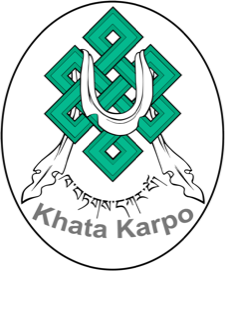An introduction to the history of Tibet
Brief summary of the history of Tibet
(This summary about Tibetan politics corresponds to what is stated in the preamble to the constitution of the central Tibetan administration in exile).
In the 2nd century BC, the Tibetan kingdom was founded by the emperor Nyatri, and lasted until the reign of the emperor Langdarma, known as the ‘beardless one’, in the 9th century.
For over more than a thousand years, forty-three successors reigned over a territory that gradually expanded to encompass the whole of Tibet and its three provinces, Ü-Tsang, Kham and Amdo. As a result, what came to be known as the Purgyel dynasty was one of the great powers of Central Asia: China, the steppe empires and Tibet were states of equivalent power.
Following the emergence of Tibetan script and grammatical tradition, religion, science and civilisation developed everywhere, with Tibet becoming the second ‘noble land’, in reference to India, the first ‘noble land’, the native land of Siddhartha Gautama Buddha, whose teachings are at the origin of Buddhism.
During the 9th century, the Tibetan empire became fragmented and, in the absence of a power capable of reunifying it, each region was left to govern itself no political organisation was able to reign over the whole of Tibet.
In 1260, the great Drogön Chögyäl Phagpa established the relationship of religious master to donor* with the rulers of the North, the Mongol emperors.
The three traditional provinces were then once again united under a single political power.
However, soon afterwards, the borders of the territory could no longer be defended and the Phagdru and Rinpung dynasties and the Tsang lords reigned one after another for 4 centuries, without any of these powers being able to extend its rule over the whole of Tibet. This fragmentation of power further compounded by many internal conflicts] led to the decline of Tibet's political power.
In 1642, the great 5th Dalai Lama founded the Ganden Phodrang, the government of Tibet. From then on, the various incarnations of the Dalai Lama successively exercised political and spiritual power in Tibet as soon as they came of age. Power was relatively stable and a non-sectarian doctrine spread. Tibetan subjects were able to enjoy a free and happy existence.
At the end of the 19th century and the beginning of the 20th century, Tibet was confronted with adverse circumstances in political affairs in general and in diplomatic and international relations in particular. This led the 13th Dalai Lama, shortly after he came to power, to leave Tibet for Mongolia, China and India. He returned to his country, aware of the international situation.
Tibetan sovereignty was thus proclaimed as a matter of urgency. Practical and political measures, such as modern education and system reforms, were adopted and started bearing fruit. Tibet had a stable and continuous political authority for nearly 400 years.
In 1949, the Chinese army began its violent invasions of Tibet. In 1950, as the situation in Tibet turned very dangerous, the 14th Dalai Lama, barely 15 years old, was put in charge. Under the threat of ever more intense and violent repression of the Tibetan people by the People's Republic of China, the Dalai Lama and the members of the Kashag, the Tibetan government, were forced to set up the government in Yadong and sign the ‘17-point agreement’ in 1951. This agreement remained in force for eight years, but was not respected by the Chinese authorities.
Immediately after his exile in Tezpur on 18th April 1959, the Dalai Lama officially rejected the ‘17-point agreement’. The Tibetan people placed their trust in the Dalai Lama and recognised the Tibetan government, the Kashag. The Dalai Lama, heading the government in exile in India, established a democratic system and, in 1960, the representatives of the Tibetan people were elected. In 1963, the Tibetan constitution was officially proclaimed.
In 1991, the parliament became the Legislative Council. On the 28th June 1991, with the approval of the Dalai Lama, the 11 members of the Legislative Council voted on the constitution establishing the democratic system of the Tibetan government in exile.
In 2001, in accordance with the Dalai Lama's directives, the democratisation of political power was extended to the election of the prime minister. Since then, the Tibetan population in exile has elected the Kalon Tripa (also known as Sikyong or Prime Minister).
In the constitution of the Tibetans in exile, it is established that when the Dalai Lamas reach the age of majority, they take over responsibility for the government and head the State. However, this ancestral custom has been abolished in order to establish a true democracy enabling Tibetans to no longer rely on a single person. On the 14th March 2011, the Dalai Lama proclaimed before parliament that he would no longer exercise political power or government responsibility, and that future political leaders and governments would be elected by the people. The constitution would therefore have to be amended. As a result, according to the constitution, amended by the 14th session of the Tibetan parliament in exile, it was agreed on the 29th May 2011 that the elected representatives of the Tibetan people would exercise the political responsibilities previously assumed by the Dalai Lama.
Since the 8th August of the same year, the policy of the Tibetan administration in exile and its representatives, including Sikyong Lobsang Sange, democratically elected by the Tibetan people, have turned the Tibetan administration in exile into a true democracy.
* The relationship between a religious master and a donor: a mutually beneficial relationship between a Lama who teaches and a rich and powerful donor who offers in exchange material goods, such as money or precious objects, or a secular status enabling him to exercise temporal power.

 Français (France)
Français (France)  English (UK)
English (UK)  Tibétain (Tibet)
Tibétain (Tibet)